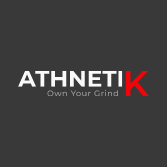Off-Season Workout Recommendations for Baseball Players
One of the first things I learned in PT school was the specificity training principle. This principle theorizes the more similar your training can replicate the actual event, eg. sport or movement pattern, the more applicable your training will be to actually improving what you are trying to work on in the first place. The vast majority of strength and conditioning programs I see written for baseball players have 1 major flaw in my opinion- they are nearly 100% sagittal plane focused. This means the majority of workouts in these plans are solely focused on front and back movement patterns- such as squats and deadlifts. Now I fully agree these exercises and movement patterns need to be included in a baseball players S&C program; however, I believe by not heavily focusing on transverse and frontal plane movements we are doing a disservice to our overhead athletes by neglecting movement patterns typical of their sport. If we do not focus on improving strength and stability through rotational and lateral movement based exercises, how can we expect our players to reach their optimal baseball performance when those same movement patterns they aren’t training make up the skills of pitching and hitting?
The main goals for an off-season strength & conditioning program are injury prevention and performance enhancement. In order to create a complete and holistic program for our overhead athletes we need to ensure their program components recreate baseball specific skill movements as much as possible in order to translate the training to on field performance. In an article titled Offseason Workout Recommendations for Baseball Players, they note “qualities associated with baseball performance include body mass, strength, running speed, linear and rotational power, throwing velocity, and bat velocity. MLB players have greater body mass than players at lower level minor league affiliate teams. They also found that MLB players have greater grip strength, faster 10-yard sprint times, and greater peak and mean vertical jump power when compared to minor league players.” In this same article the researchers also state “a segmental power analysis on baseball pitching determined that trunk rotation power had the largest influence on throwing velocity in high school and professional pitchers.” This goes to show that plyometric activities with a focus on linear and rotational velocity of the trunk is needed to max out a player’s development in throwing velocity. Yes, our athletes need strong legs and core, but squats and planks alone will not cut it to maximize their athleticism and velocity. Along with rotational velocity, the researchers also note “ lower body power is the predominant performance variable that is correlated with pitching velocity.” Unfortunately, many strength & conditioning programs never touch the plyometric side of training leaving our athletes at a disadvantage. We need to be functional testing our athletes in the offseason from day 1 to know if their training is paying off at completion of this point of the periodization model, ie. prior to pre-season training. This testing needs to include single hop, lateral hop, long jump, and vertical hop testing to assess the athletes initial ability to utilize the stretch shortening cycle. Our athletes have a goal to be the best they can be on the diamond, and the research is out there telling us what to focus on- lower body and trunk rotational power!
In order to maximize this power, our athletes need to be able to meet certain mobility and strength targets in their training to fully utilize the stretch shortening cycle. If an athlete is missing a large amount of lead leg external rotation while throwing, their hips will have to open early causing their trunk to open as well. This would be a mobility issue. However, we could also have an athlete that does not have the strength to sit down in back leg while getting his force vector into position towards his throwing target, which would also be a contributor to decreasing velocity and putting the player at a higher risk of injury. We need to be developing both strength and mobility so we can optimize the plyometric training we should be focusing on in the late period of offseason training. Emphasizing explosive strength and the rate of force production is a must for effective transfer of training to the diamond.
When it comes to off-season programming, there are five key phases we need our athletes to focus. The first phase is the recovery phase in which the athlete takes 2-4 weeks off from all baseball specific activity to allow recovery of the physical and psychological demands of the sport. In this phase movement and range of motion (ROM) exercises are key in order to restore deficits accrued throughout the previous season. Before beginning the next phase of off-season training we need to make sure our athletes have restored any mobility or flexibility deficits before beginning strength training. This is why being able to accurately measure and assess an athletes movement patterns and current range of motion is so important. Athnetik is able to provide these player assessments at end of season to know what each athlete needs to work on individually for improving mobility and flexibility.
